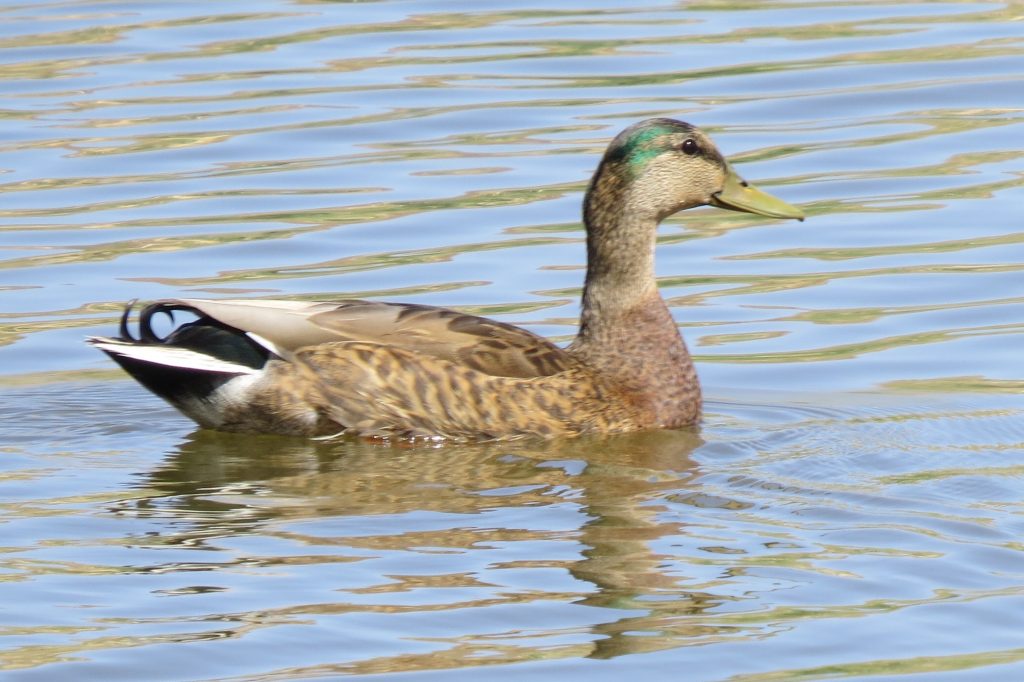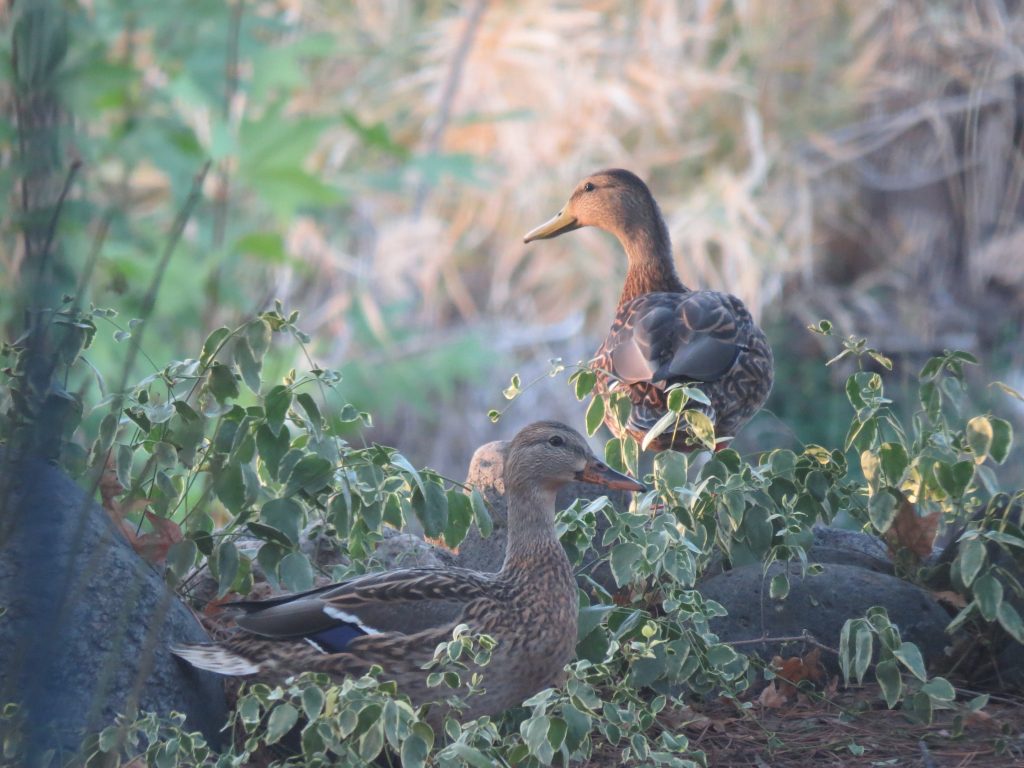(Anas diazi)
Kip and Laura Stransky were amazed when they counted 50+ Wood Ducks raiding their birdseed in their Lake Montezuma back yard, which borders Beaver Creek. I’ve seen Wood Ducks in the Verde Valley before, mostly in creeks and rivers. Wood Ducks are so gorgeous and uncommon that just last week I talked to a couple birders that drove up from the Phoenix area to see some Wood Ducks reported at Bubbling Ponds. But the most I’d previously seen in one place in Arizona was in Aspen Pond, Camp Verde, where 10-15 wood ducks live year round. Mixed in with the wood ducks in the Stransky’s yard were 22 Mallards and a single Mexican Duck. (Top duck in above photo)
Twice a day like clockwork, they come as a group, running frenzied toward the seed the Stranskys put out.

“The Mexican Duck was formerly considered a species (Anas diazi), and is currently lumped with Mallard (as subspecies Anas platyrhynchos diazi), but recent DNA studies suggest that the Mottled Duck (not Mallard) is its closest relative (McCracken et al. 2001)” (Sibley 2011). Currently though, it is listed as a separate species by Cornell’s eBird app (eBird.org 2019).

The fact is that Mexican Ducks readily cross-breed with Mallards. The further north you go in the Mexican Duck’s range, the more likely you will encounter a hybrid between the two (Sibley 2011). Thus, finding a Mexican Duck this far north is something rare indeed. On the bird above, notice the green on the head and the white in the tail.
Credits
McCracken, K. G. , W. P. Johnson, & F. H. Sheldon. 2001. Molecular population genetics, phylogeography, and conservation biology of the mottled duck (Anas fulvigula). Conservation Genetics 2: 87-102
Cover photo by Chip Engelmann

Such fun pictures and movies. Thanks for your research on the DNA differences on Mexican Duck and Mallards and Mottled Ducks. What are the specific differences?
I’m supposing you you want me to compare the female Mallard to the Mexican Duck.
You can use the picture above as a reference. The Mexican Duck has a darker body, no white in the tail, and no curl in the tail. It also has a brighter yellow beak with a dark tip.
I’ve never seen a Mottled Duck. The only difference I can see from the pictures is that the Mexican Duck has white on both sides of the blue wing stripe.
Hey Chip,
We are your neighbors, the Erbs at 3615 E. Montezuma Ave.
Love this site. Are you leading the hikes at the Well on 1st & 3rd Saturdays?? let us know. Thx,
Audrey & Bob Erb
Yes, I’m signed up through May. Hope to see you there. You can verify the times via the calendar on the sidebar.
Hi Chip: love your blog, photos, interest stories and bird sightings. Very odd about CV Reclamation – guess you are on a “watch list” now. Spy disguised as birder – not bad !
The Sewage Terrist. LOL!
Fun blogging, Chip! Keep up the good work.
Thanks for sharing our backyard “duck phenomenon.” We certainly have enjoyed having people come to see the Wood Ducks and Mallards and especially the Mexican Duck with us.
Tex, the Mexican Duck, has not been coming this past week, but the numbers of Woodies and Mallards continue to go up. This morning, we had a total of 122 ducks fly, run, and/or waddle into our yard. Truly a phenomenon.
You always have such fun birds at your house. I should recommend your place as an eBird hotspot. We wouldn’t want you to be lonely.
Chip